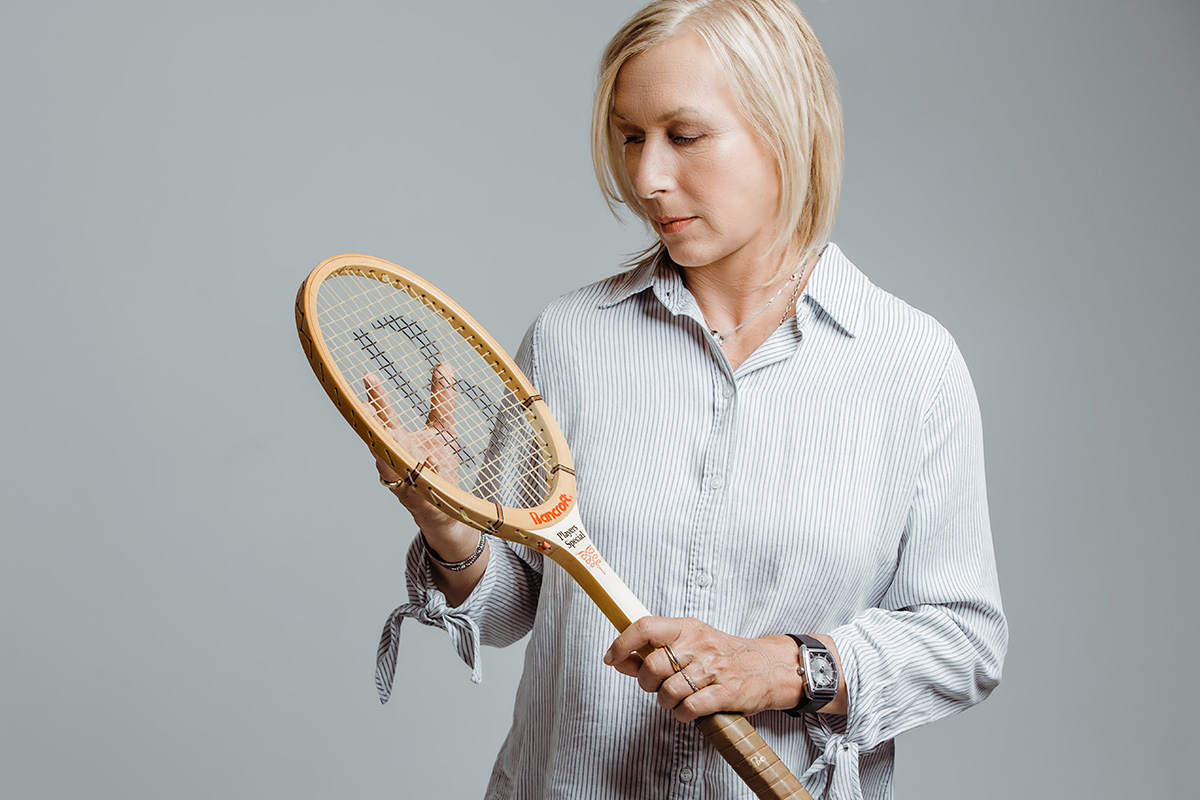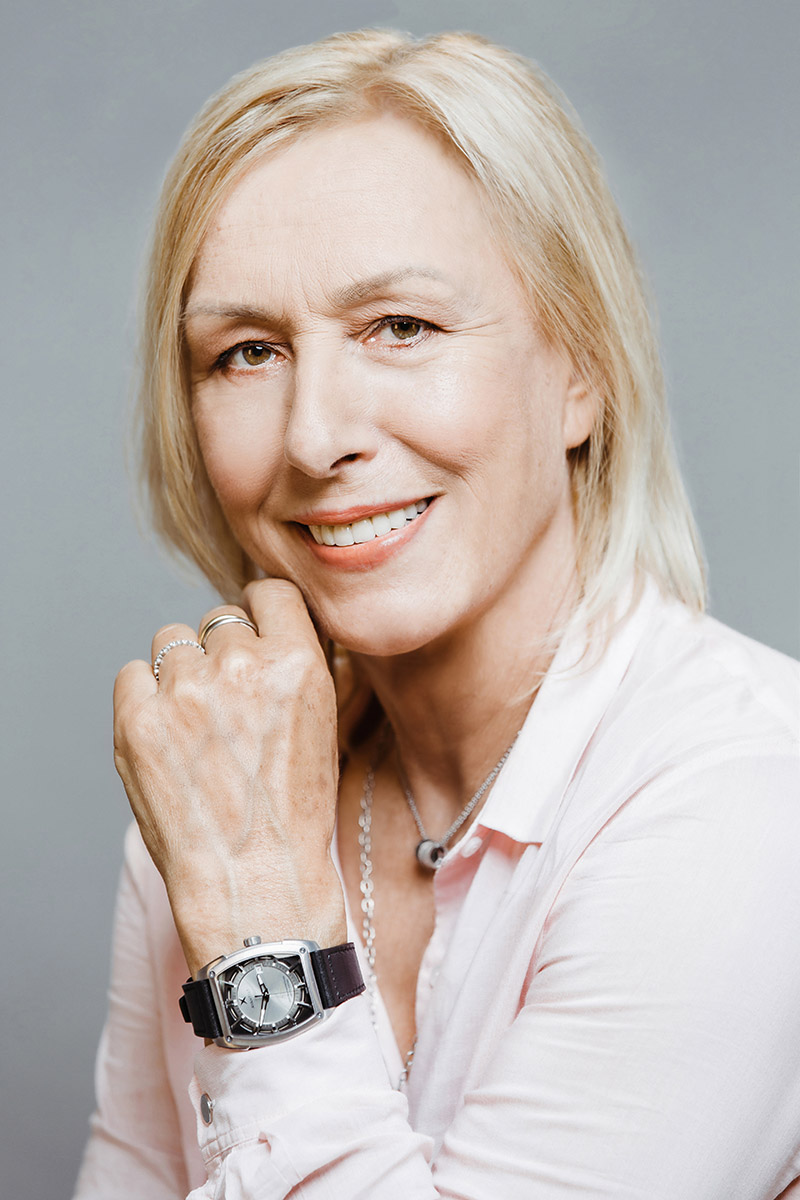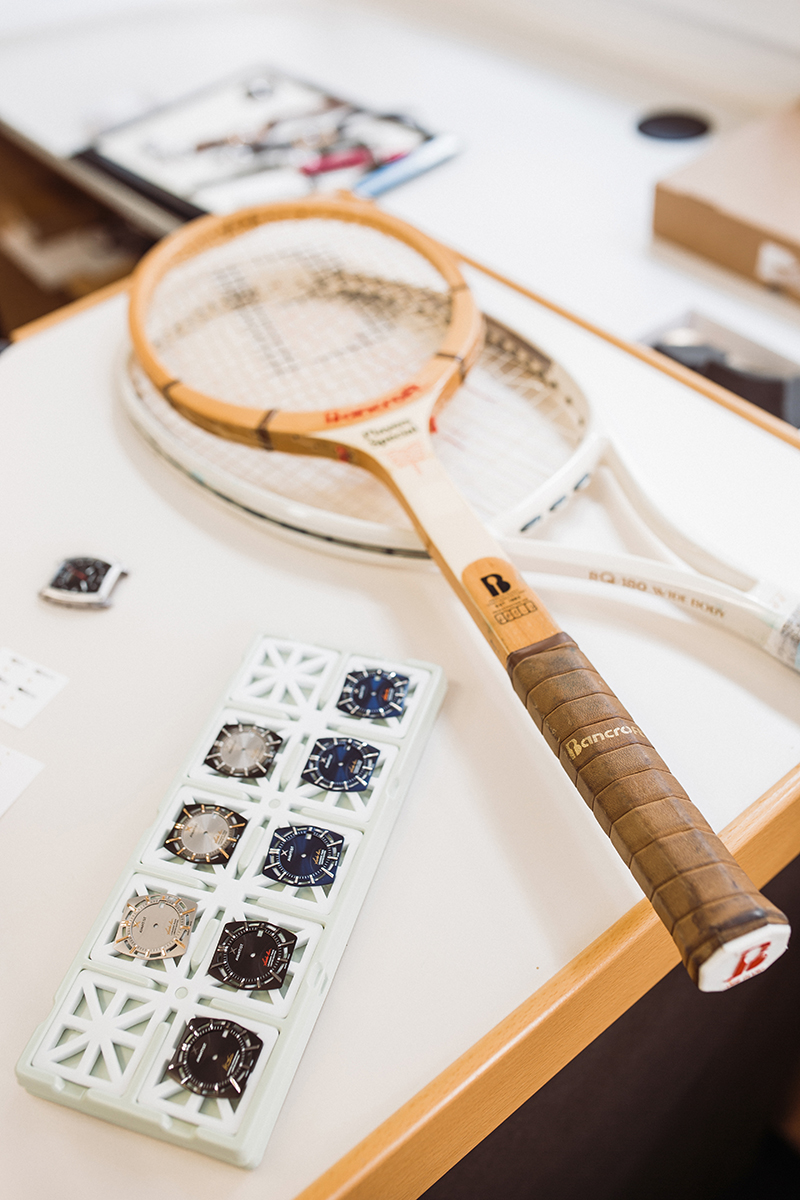This website uses cookies so that we can provide you with the best user experience possible. Cookie information is stored in your browser and performs functions such as recognising you when you return to our website and helping our team to understand which sections of the website you find most interesting and useful.
Martina Navratilova on how Serena Williams could beat her Grand Slam record
By Rachel Ingram | 23 August 2017 | Sport
Tennis legend Martina reflects on her record breaking career, her rivalry with Steffi Graff and her new favourites

Regarded by many as the greatest female tennis player of all time, Martina Navratilova's reputation precedes her. Having held the world number one position in women’s singles for a total of 332 weeks, plus a record 237 weeks at the top of the leaderboard in women’s doubles, she’s the only player in history to occupy the top spot in both singles and doubles for over 200 weeks. She’s also won the Wimbledon Singles title a consecutive record of nine times – and says that if any player were to beat her record, it will be Serena Williams once she returns to the courts after her pregnancy
It comes as no surprise then that when luxury watchmaker Avantist went looking for an ambassador, Navratilova was the obvious choice. More than just a face, she’s worked with the brand to create an innovative limited-edition collection of watches, each of which features a string from the racquet Navratilova used to win the Wimbledon singles in 1987.
The timepieces were unveiled during the Wimbledon championships in July, where Tempus caught up with the sporting legend as she returned to the scene of some of her greatest victories…
Tempus: It was 30-years ago that you won your eighth Wimbledon title. Can you recall how you felt?
You say it’s 30 but it feels like 20 maximum! I was 30 years old at the time, I played Steffi Graff in the final, I had just lost the French Open just two weeks before, and two weeks later I redeemed myself at Wimbledon. I had a very specific game plan against her and I won the match 7-5, 6-3. I actually remember the set point in the first set. Normally at the net, she’s on the base line, but somehow this time she ended up at the net and I had a really great backhand passing shot on set point, and then I went on to win. So, I remember that match very well because I really wasn’t meant to win. Even though I hadn’t lost, I’d won six in a row at that point, but I just found that inspiration on the day.

How did you first get into tennis?
My parents played and my grandparents played, in fact my parents actually met on the tennis court when I was five. Back when I was a child, we had a court across the street but it was decrepit, so we went to the club to play. In the spring we would fix the courts. You’d either pay the fee to be a member or you could work, so we worked. I started playing against the wall for a couple of years, but I could only hold the racquet with two hands. I had my grandmother’s racquet, a heavy wooden racquet with a wooden handle, so I couldn’t hold it with one hand. My father was a player and he said when I could hit a forehand he’s take me to play on the tennis court’. So for two years I just played against the wall. When I was seven, I could finally hold it with one hand so my father coached me for a couple of years but he didn’t really know how to teach tennis, so I got a coach when I was nine years old, and that was that. So that was my start – hitting it on the wall and pretending I was Rod Laver.
In a career that spanned over 30 years, what motivated you and kept you going?
I think all the champions have the same motivation, which is to be better. We love the sport. If you don’t love tennis you can’t play it well because it’s just too intense. You have to have a passion for it. I always loved it. Through the years I always thought I could play better tennis, that I hadn’t yet hit my peak. I was still learning about better techniques and tactics, and how to play better under pressure… I always felt like I was evolving so I never stopped growing, never stopped being curious. As Billie Jean King said, she’s never seen the ball come over the net same way twice, there is always something different about each shot.
Was there ever a moment during your tennis career that you felt like giving up?
Giving up? That’s not in my vocabulary. Champions don’t quit until they get it right. And then when you get it right, you want to get it right a little bit better. I was burnt out, I played tennis for about six years where I didn’t really take a day off, I think I over-trained a little bit, but nevertheless I stayed at the top for six years and then I was just burnt out and I didn’t know it. For about three years I was where Novak Djokovic is now I think, at the end of ’86, ’87, ’88, but by ’89 I just needed to step away. I had a psychologist and who said take a week and don’t do anything at all. She said if you can get the feeling back when you were hitting the ball against the wall when you were six years old, then keep playing, if you can’t, then quit. It was having the permission to quit that made me realise I didn’t want to. So I came back.

Would you say winning your ninth Wimbledon title was your most important moment?
It was the most satisfying because I really had to work at it. I changed my footwork completely. In the old days, you did a cross step to the forehand and backhand, now, it’s all open steps. I started playing when I was five, this is now ’89 and I’m 33, and I realised I’m doing it wrong. If I really wanted to complete I had to do an open stance and start with an open foot. It’s because of doing that that I realised I could compete against Steffi Graff, etc, then I won that Wimbledon in ’90 and that was the most satisfying. I had won eight Wimbledons and I had to start over essentially, but that’s what kept me going – the ability to evolve and get better.
Do you reckon your record will be broken?
Well if anybody can break it, it’s obviously Serena Williams. Or Roger Federer, actually. The way that Serena is playing at the moment, she could. She’s about to give birth and she’s already said she’s coming back. If anyone can do it, it’s her.
Strings from some of your winning racquet have been incorporated into Avantist’s striking Legend Series timepieces. Please tell us about this collaboration.
I wish I had more racquets to make more watches! This was Keeran Janin’s [ founder of Avantist] idea, obviously, and I was thrilled with it. I thought it was so original. I love new ideas, I like doing new things, experimenting and evolving… and I love watches. I have about 15 watches at home. I’m also into mechanics, I like how things work, so I was intrigued by having the idea of putting strings that mean something into a watch. I also thought engineering wise this would be quite a challenge for a watchmaker. It just was intriguing to me to think you could have a piece of your history on your wrist. How cool is that! Watches usually record history but this has a little bit of history inside.
Read more from Martina in this month's issue of Tempus Magazine






